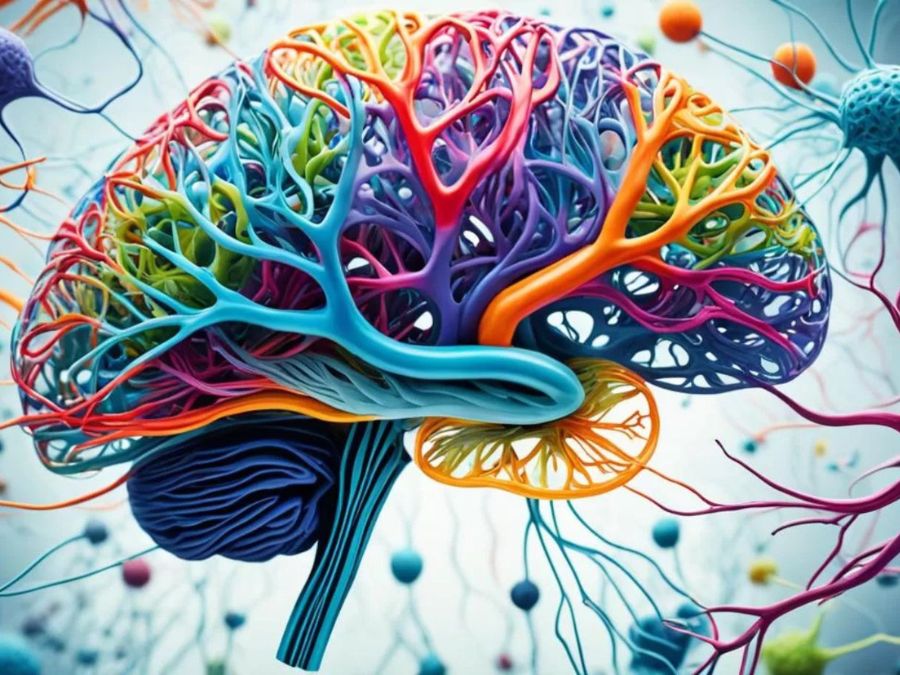ADHD in Older Adults: How to Manage Symptoms Over the Years

Introduction: Understanding ADHD in Older Adults
ADHD in older adults is a subject that has been largely overlooked for decades. While it is commonly associated with childhood and adolescence, recent studies and real-life experiences reveal that Attention-Deficit/Hyperactivity Disorder (ADHD) often persists well into adulthood — and yes, into the senior years as well.
Many individuals who reach their 60s, 70s, or even 80s are surprised to learn that the forgetfulness, restlessness, or lack of focus they’ve struggled with for most of their lives may actually be symptoms of undiagnosed ADHD. Others who were diagnosed earlier may notice changes in how the condition manifests as they age.
In this in-depth guide, we’ll explore how ADHD in older adults presents itself, why it often goes undiagnosed, and, most importantly, what can be done to manage the symptoms and maintain a fulfilling, focused, and balanced life throughout the golden years.
What Is ADHD in Older Adults and Why Is It Often Overlooked?

ADHD is a neurodevelopmental condition that affects executive functioning, including attention, impulse control, memory, and organization. While it is widely studied in children and young adults, ADHD in older adults remains underdiagnosed and misunderstood.
How ADHD Looks Different in Older Adults
In older adults, ADHD doesn’t necessarily involve the same hyperactivity seen in children. Instead, the symptoms often become more internalized. An older adult with ADHD might feel a constant mental restlessness, struggle to maintain focus during conversations, or find it difficult to organize daily tasks.
Common manifestations include:
- Forgetting appointments or medications
- Difficulty managing finances or paperwork
- Starting tasks and failing to complete them
- Feeling overwhelmed by simple planning activities
- Constantly misplacing things like glasses, keys, or bills
This internal chaos can lead to feelings of frustration, anxiety, or even depression — especially when seniors attribute these challenges to “just getting older.”
Why Many Older Adults Remain Undiagnosed
There are several reasons why ADHD in older adults often goes unnoticed:
- Lack of awareness: Until recent years, ADHD was not widely recognized as a condition that could persist into adulthood.
- Symptom overlap: Many ADHD symptoms mimic those of age-related cognitive decline, such as mild memory loss or attention difficulties.
- Stigma and misattribution: Older adults may be less likely to seek mental health support due to generational stigmas or may attribute their symptoms to aging, personality traits, or other health conditions.
- Diagnostic limitations: Most ADHD diagnostic tools were designed for children and young adults, making it harder to identify the condition in older populations.
Recognizing ADHD in older adults is not about pathologizing normal aging — it’s about identifying patterns that have persisted for decades and offering compassionate, personalized support.
Key Symptoms of ADHD in the Elderly

Understanding how ADHD symptoms appear later in life is crucial to supporting older adults. While aging naturally affects memory and cognition, ADHD symptoms are typically more intense and long-standing. Let’s explore some of the key signs:
Inattention and Memory Challenges
Older adults with ADHD often report increasing forgetfulness. However, this is not the same as age-related memory decline. People with ADHD tend to forget details even seconds after hearing them, struggle to recall instructions, and may appear distracted during conversations.
Examples:
- Repeatedly asking the same question
- Missing important dates or scheduled events
- Forgetting names, even of close acquaintances
- Losing track of time or wandering off during tasks
This can significantly impact independence and self-confidence, especially when loved ones don’t understand the root cause.
Impulsivity and Poor Self-Regulation
While we often think of impulsivity as a childhood trait, it continues into older adulthood. Seniors with ADHD may interrupt others, speak without thinking, or make hasty financial decisions. Emotional regulation is also affected — leading to outbursts of frustration or sadness.
Examples:
- Impulse buying or gambling
- Interrupting caregivers or family members
- Snapping at minor inconveniences
- Difficulty managing emotions during social interactions
These behaviors can strain relationships and isolate individuals from friends, partners, or caregivers.
Internal Hyperactivity and Mental Restlessness
The classic hyperactivity of childhood ADHD may transform into internal restlessness in later years. Older adults may feel like their minds are racing, making it hard to relax, sit still, or sleep.
Common signs include:
- A need to constantly stay busy (cleaning, fidgeting)
- Trouble falling or staying asleep due to racing thoughts
- Jumping from one thought or activity to another without closure
- Inability to engage in quiet, peaceful activities like reading
This symptom can be exhausting, both mentally and physically, and is often misattributed to stress or anxiety.
Chronic Disorganization and Procrastination

Disorganization is one of the hallmark symptoms of ADHD that tends to worsen with age if not addressed. Important papers pile up, bills go unpaid, and to-do lists remain unfinished.
Real-life examples:
- Difficulty maintaining a clean and organized living space
- Missed deadlines or confusion about schedules
- Difficulty with grocery shopping or meal planning
- “I’ll do it later” becoming a daily mantra
These patterns affect self-esteem and independence, making it harder to maintain quality of life.
ADHD and Aging: How the Brain Changes Over Time

Aging naturally affects the brain — and when ADHD is in the mix, the changes can be more complex. Understanding how age-related cognitive changes interact with ADHD helps differentiate between normal aging and the neurological impact of a lifelong condition.
Cognitive Decline vs. ADHD: What’s the Difference?
Cognitive decline associated with aging often involves slower information processing and minor memory lapses. In contrast, ADHD-related issues tend to be long-standing and more disruptive to daily life. For example, while it’s normal to occasionally forget where you placed your keys, people with ADHD frequently forget important tasks, misplace items regularly, and experience mental fog even during familiar routines.
Key differences:
- ADHD is consistent over time (though intensity may vary); age-related decline progresses gradually.
- ADHD affects planning, prioritization, and follow-through, not just memory.
- ADHD symptoms often improve with structured support, while dementia-related symptoms do not.
The Brain’s Executive Functioning and ADHD
ADHD primarily affects the brain’s prefrontal cortex, responsible for executive functions like attention, impulse control, and organization. As we age, this area of the brain also naturally declines — meaning older adults with ADHD may feel a double impact.
Scientific studies show that dopamine production (critical for focus and motivation) also decreases with age, which can worsen ADHD symptoms like apathy, forgetfulness, and lack of drive.
Lifestyle Factors That Influence Symptoms

While the brain does change, many lifestyle habits can either ease or intensify symptoms of ADHD in older adults. A sedentary lifestyle, poor diet, high stress levels, and social isolation are all factors that can worsen executive functioning.
By contrast, mentally stimulating activities (like reading or puzzles), social engagement, regular physical activity, and good sleep hygiene can buffer cognitive decline and improve focus — even for those with ADHD.
Practical Strategies to Manage ADHD Symptoms in Older Adults
Managing ADHD in older adults involves a multifaceted approach — including routines, mindfulness, behavioral therapy, and self-care strategies. Here’s how seniors can take back control of their time, attention, and emotional well-being.
Daily Routines and Structured Planning
One of the most effective ways to support an aging brain with ADHD is to create predictable, easy-to-follow routines. Structure helps compensate for memory and organization challenges.
Tips:
- Use visual calendars and color-coded reminders
- Break down tasks into simple, manageable steps
- Stick to consistent meal, medication, and sleep schedules
- Keep frequently used items in designated spots
Creating “habit loops” (e.g., always brushing teeth right after breakfast) can make daily tasks more automatic.
Mindfulness and Attention-Training Practices

Mindfulness may sound trendy, but research confirms its effectiveness in enhancing focus and emotional regulation, especially in older adults with ADHD. Simple exercises like breathing techniques, body scans, and guided meditations can reduce restlessness and improve cognitive control.
Start with:
- 5 minutes of quiet breathing each morning
- Guided mindfulness apps (like Headspace or Calm)
- Walking meditation in nature for grounding and clarity
Over time, these practices can help reduce impulsive reactions and enhance presence in daily activities.
Cognitive Behavioral Therapy (CBT) for Seniors
CBT is a gold-standard intervention for ADHD in adults and can be adapted for older populations. A trained therapist helps seniors reframe negative thinking patterns, develop organizational strategies, and cope with frustration related to long-standing symptoms.
CBT is especially effective in addressing:
- Procrastination and avoidance
- Emotional regulation difficulties
- Self-criticism and shame
- Memory compensation techniques
Therapists may also integrate elements of occupational therapy to teach practical, hands-on strategies for managing daily life.
Nutrition, Movement, and Sleep

What we eat, how we move, and how well we rest all influence brain function — and for those with ADHD, these areas can either help or harm. Consider these adjustments:
- Nutrition: Focus on brain-healthy foods like leafy greens, omega-3 fatty acids (salmon, flaxseed), nuts, berries, and whole grains. Avoid excessive sugar, caffeine, and processed foods.
- Exercise: Even light physical activity like walking, swimming, or dancing helps regulate dopamine and reduce symptoms of restlessness or anxiety.
- Sleep: Set a bedtime routine with calming activities (no screens before bed!), and keep consistent sleep/wake times.
These habits work together to stabilize mood, energy, and attention.
The Role of Family, Caregivers, and Health Professionals
Living with ADHD in older adulthood doesn’t have to be a solitary experience. In fact, the support of a compassionate circle — including family members, caregivers, and healthcare professionals — can dramatically improve outcomes.
Recognizing the Signs and Offering Empathetic Support
Often, it’s loved ones who first notice that something isn’t quite right. But instead of dismissing these observations as “normal aging,” they can serve as an entry point to explore possible ADHD symptoms.
Family members and caregivers should look for:
- Patterns of forgetfulness or disorganization not previously explained
- Emotional outbursts or mood swings
- Difficulty following conversations or instructions
- Increasing dependence on others for simple tasks
Approaching the subject with empathy and curiosity, rather than frustration or blame, encourages open dialogue and eventual diagnosis.
Creating a Supportive and Structured Environment
Environmental structure is key for managing ADHD symptoms in older adults. Loved ones can help by:
- Reducing clutter and simplifying living spaces
- Labeling drawers and organizing storage
- Helping with calendars or medication organizers
- Providing gentle prompts for routines or appointments
Even small adjustments can significantly reduce daily stress and improve independence.
Professional Guidance and Cognitive Stimulation
Health professionals — including geriatric psychiatrists, psychologists, and occupational therapists — can assess cognitive health and create personalized ADHD care plans.
Additionally, engaging in activities that stimulate the brain helps build cognitive resilience:
- Board games and puzzles
- Volunteering or part-time work
- Music, art, or language classes
- Social clubs or support groups
These activities help maintain a sense of purpose and identity, even when executive functions are challenged.
Treatments for ADHD in Older Adults: What Really Works?
Although ADHD in older adults is underdiagnosed, treatment options do exist and can be tailored to suit each individual’s lifestyle, health profile, and symptom intensity. These treatments usually involve a combination of medication, behavioral therapy, lifestyle changes, and environmental supports.
Medication Considerations for Seniors with ADHD
Stimulant medications like methylphenidate (Ritalin) and amphetamine salts (Adderall) are commonly used in younger adults with ADHD. However, for older adults, the decision to use stimulants requires careful medical evaluation, especially when cardiovascular risks or other chronic health issues are involved.
Important considerations:
- Stimulants may raise blood pressure or heart rate, which can be risky for seniors with heart conditions.
- Non-stimulant medications like atomoxetine (Strattera), guanfacine, or bupropion may be safer alternatives.
- Medication dosages often need to be lower and carefully monitored in aging individuals.
Always consult a geriatric psychiatrist or neurologist before starting or adjusting any ADHD medication.
The Role of Psychotherapy and Coaching
For many seniors, talk therapy offers relief and practical strategies, especially when combined with ADHD coaching. Unlike medication, therapy helps individuals process decades of internalized shame or self-criticism linked to their undiagnosed symptoms.
Options include:
- Cognitive Behavioral Therapy (CBT) – to change thought patterns and behaviors
- Mindfulness-Based Cognitive Therapy (MBCT) – to reduce anxiety and improve focus
- ADHD coaching – to help structure routines and create goal-oriented plans
These interventions empower older adults to understand their minds and build healthier coping mechanisms.
Assistive Tools and Technological Aids

Modern tech can be a game changer for managing ADHD in older adulthood. These include:
- Digital planners and calendar apps with alerts
- Medication reminder apps or smart pillboxes
- Voice assistants (like Alexa or Google Assistant) to create spoken reminders
- Noise-canceling headphones for focus
These tools bridge the gap between intention and action — a frequent hurdle for adults with ADHD.
Real-Life Testimonials: Aging with ADHD

Sometimes, the most powerful insights come from those living the experience. Here are a few real-life reflections from older adults who were diagnosed later in life and finally understood their lifelong struggles.
Margaret, 68 – “It Wasn’t Dementia. It Was ADHD.”
“For years, I thought I was getting early dementia. I’d lose my phone five times a day, forget appointments, and feel overwhelmed by the smallest things. After my granddaughter was diagnosed with ADHD, I started reading up on it — and I cried. It was like reading about myself.”
After seeking a diagnosis and starting therapy, Margaret began implementing routines, journaling, and practicing meditation. “I don’t feel broken anymore. I finally understand my brain.”
James, 72 – “The Diagnosis Changed My Retirement”
James, a retired engineer, noticed that even in retirement, he felt restless, disorganized, and irritable. “I couldn’t finish a book or sit still. I’d start five projects and abandon them all. My wife was losing patience.”
After receiving an ADHD diagnosis, James started working with a coach and switched to a high-protein diet. He also began taking low-dose medication under medical supervision.
“Retirement is peaceful now. I do fewer things, but I actually finish them.”
Carla, 65 – “I Thought I Was Just Scatterbrained”
“I always assumed I was just disorganized by nature. My teachers said I was lazy. My bosses said I had ‘potential’ I never lived up to. Only in my 60s did I learn that I have ADHD.”
Carla now volunteers at a local literacy center and uses a digital calendar religiously. “I finally gave myself permission to ask for help, and it made all the difference.”
Conclusion: A Hopeful Outlook on Aging with ADHD
Living with ADHD in older adulthood may present unique challenges — but it also offers an incredible opportunity for renewed self-understanding, empowerment, and healing.
Many older adults spend decades wondering why life always felt harder for them. A diagnosis brings clarity, compassion, and the tools to create a better future — no matter your age.







